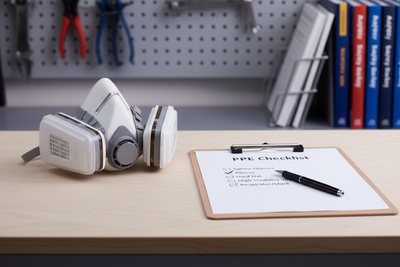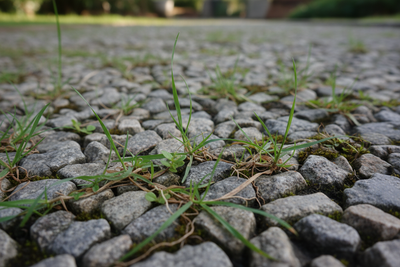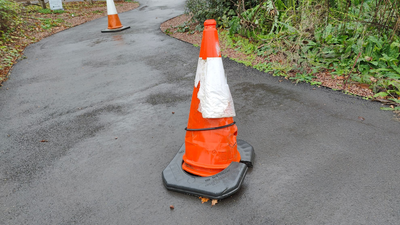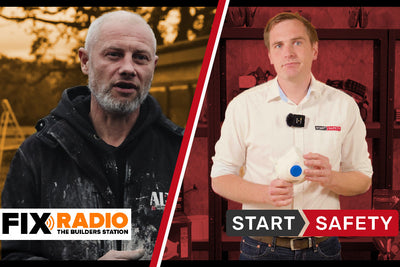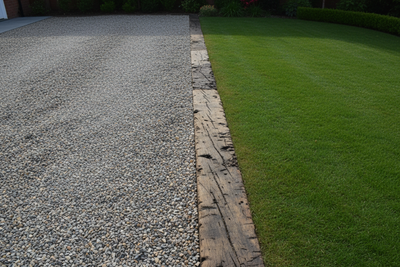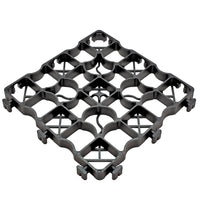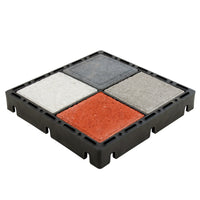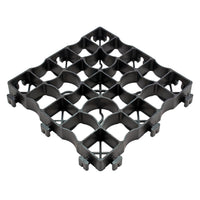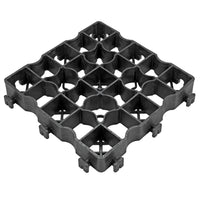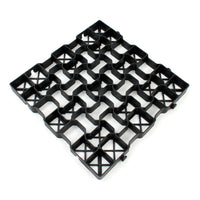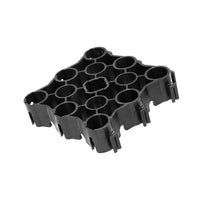The Most Common Driveway Drainage Problems Explained
Water management around your property is an often-overlooked but highly important part of property management or ownership. Get it wrong and you can suffer the consequences of damp walls, hairline cracks in walls, right through to subsidence, flooding and sinkholes. The latter can be very expensive to fix and can even make your property harder to sell in the future.
What Causes Drainage Problems?
Most drainage problems are caused by excess rainwater not having anywhere to go. A normal property will have two to three main sources of water that need to be carefully managed to prevent issues, including the roof of the building, the driveway, and any patio areas. If the runoff from any of these areas lacks sufficient drainage, the water can build up, leading to a drainage problem.
What Are The Most Common Driveway Drainage Problems?

The Issue: Increasingly Large Driveway Sizes
The larger an area is, the more surface water it will collect during a rainstorm; all this water needs somewhere to go. Many houses were built with driveways that could accommodate one small car from the 1960s. Since then, cars have significantly grown in size, and most households have 2-3 cars, meaning driveways have been expanded, often without consideration for the additional water runoff.
When you factor in several houses in a street, all within close proximity to each other, the problem is compounded further.
The Solution:
When upgrading parking or increasing the size of a driveway, where possible, use a gravel grid driveway drainage solution to create a gravel parking area. These grids prevent gravel compaction and will allow water to freely drain through the surface without being channelled to surrounding areas.
This, in turn, cuts down on how hard drainage in the area has to work, significantly reducing the risk of flooding. Not only are grids more cost-effective than concrete and tarmac hard standings, but they are often seen as an eco-friendly solution for driveways. A gravel driveway is one of the best and easiest DIY driveway drainage solutions to implement.
The Issue: Blocked Drains
A lack of regular maintenance can lead to drains being blocked with silt, a process that occurs gradually over time. This issue is often only highlighted during periods of heavier-than-normal rainfall, making it a very common drainage problem. This issue is particularly common around hard driveways such as concrete or tarmac, where dirt is washed from the surface of the driveway and then finds its way down the drain and is deposited.
The Solution:
Set a reminder in your calendar to check and inspect your drains. Walk around your property to identify any drains with pooling water or areas where water is pooling against the building (ideally, you will want to pick a day when it's raining). Make a note of anywhere water is pooling, then either investigate it or arrange a specialist to come and take a look as soon as possible.
Key Areas To Examine;
- Downpipes from the roof.
- Where patios meet the building.
- Where the driveway is closest to the building.
- Sink gully pots and threshold drainage.
The Issue: Inadequate Drainage
As we touched on earlier, driveways have grown in size, and drainage systems have not always been upgraded to cope with this increased level of concrete and tarmac surfacing. Further compounding this is that historic soakways were often poorly constructed, using only broken tiles and rubble to create surface area for water to drain away when it goes down rainwater drains.
Over time, these old systems collapse, fill with silt and generally become ineffective. This means that even if the drains are not blocked, the soakaway (an underground outlet for gutters and surface water run-off where it can naturally soak into the surrounding soil) may not be able to deal with the amount of water being put into it.
The Solution:
If you discover your soakaway for your drain has failed and needs replacing, you will need to dig it out and install a new one. Modern soakway crates offer massive performance improvements over “broken rubble” soakways of old. Effectively acting as a storage tank until water naturally soaks into the soil, attenuating the impact of a sudden heavy downpour.
The Issue: Poor Design
Many driveways are often extended without planning permission, meaning they are often “enhanced” without proper design scrutiny. The same can be said for patios.
This can lead to;
- Driveways being designed with a slope leading towards the property.
- Driveways running along and right up to the property.
- Driveways bridging the damp proof course (being installed too high alongside the property).

The Solution(s):
All three of these issues above can be resolved by adding a threshold drain connected to an adequate soakaway (or main sewer system). A French drain (where a perforated plastic pipe connected to a drain is laid into a gravel ditch) would also work as both systems intercept water before it comes over the damp proof course or enters the building. They then channel the water into the subsurface drainage infrastructure.
Do I Need Drainage For a Gravel Driveway?
Throughout the above you will have noticed a trend that most of these issues only occur with concrete or tarmac driveways (or any hard surface that does not allow water to pass through). So does that mean you don't need drainage for a gravel driveway? The answer: it depends.
If you have sandy soil where you live, your gravel driveway will likely keep up with any influx of water, quickly letting it drain through and flowing away into the earth without issue.
If, however, you live in an area with heavy clay, you may find that during prolonged wet periods the soil becomes saturated. Water will pool even on a gravel driveway. In such cases, it is crucial to add a slope (ideally away from your property) of around 1-1.5%, which allows any pooling surface water to run off.
You can also add a channel drain to channel away excess water into a suitable soakaway, ensuring any runoff does not become an issue for neighbouring properties.
Need Help Draining Your Driveway?
Our sales team is here to help you get the best products for the job. From gravel grids to soakaway crates, we have everything needed for a flood-free, damp-free home or business.
If you need help, call us today on 01905 794 875 or fill out our contact form for fast, free advice and guidance on your next project.
- Author
